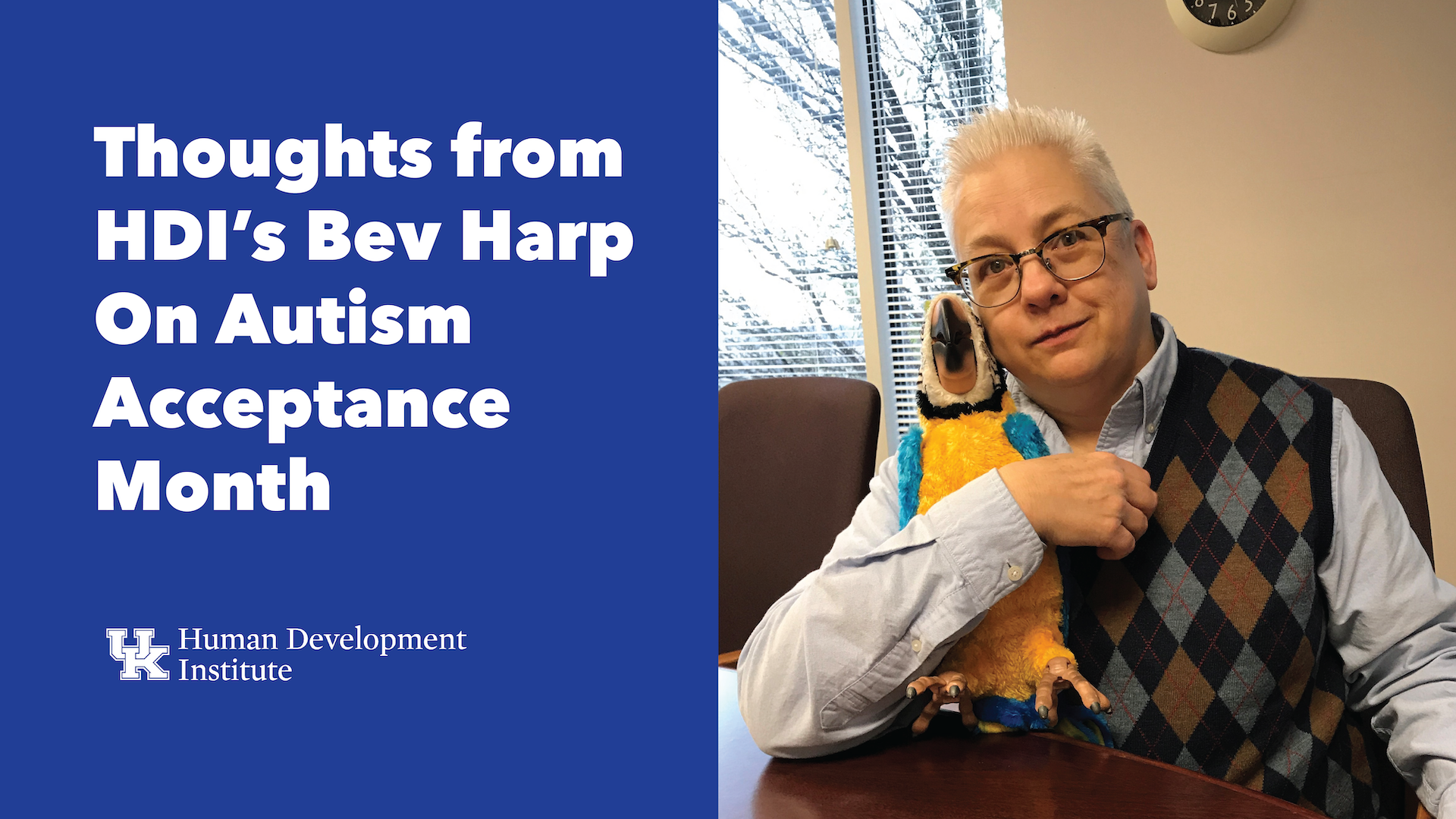Bev Harp, Project Director for HDI’s Innovative Supports for Autistic Workers, remembers the days when the only rhetoric about autism was awareness rhetoric.
And she remembers that awareness could mean radically different things to different people.
“To some people that meant being aware that autistic people exist
and that autism is a disability and needs to be accommodated. To others, it meant being aware that there are more and more of us being identified. You would see Autism Awareness buttons that said things like ‘1 in 88. Are you scared yet?’” She said. “This was the heyday of the vaccine panic, so you’d see those messages about poisoned and ruined children too. Pure fearmongering.”
In the past few years, as the number of recorded autism cases has climbed to 1 in 36, a new idea has started making the rounds.
Instead of autism awareness, focus on autism acceptance.
April is Autism Acceptance Month – a time for celebrating autistic people and advocating for a better world for them. And there are a few key differences between the two ideas – awareness is simply focused on knowledge of autism. One can be aware of autism. Acceptance, on the other hand, focuses on building a society that is inclusive and welcoming to autistic people.
“We don’t need a ‘cure’ for autism, we don’t need to change autistic people so they seem more neurotypical, but what we need is to build a more equitable society where we can all thrive,” Harp said. “We are allowed to take up space and to participate in whatever facets of society we choose.”
And that means reframing the way that our society approaches autism and views autistic people.
“We are now seeing more than 2 percent of our population fit the criteria for autism,” Harp said. “It’s time to stop thinking of autism as something to be remediated and recognize that it is and always has been one of the many natural and neutral ways to be human.”
And with that, there are many barriers to still overcome.
“We still have around 85 percent unemployment. We still have people being tortured at the Judge Rotenberg Center and other institutions ‘for their own good.’ Kids being segregated, adults deprived of autonomy,” Harp said. “Of course, eugenics would be the ultimate form of ableism. The search for the ‘cause’ of autism has always been wrapped up in a fantasy of a world without autistic people. Somehow people can picture their autistic loved ones as still themselves yet also entirely different.”
And while there is a lot of work to do, it is worth noting that autistic community has created a powerful shared community among autistic people. Harp said that the term autistic culture has had quite a journey over time, starting just as a term to describe art, traditions and practices common to autistic people. From there it came to represent more and more as autistic people shared more of their interests and passions. It became about those passions and how autistic people relate to them.
“My favorite aspect of autistic culture is the pastime of taking any sort of source material (a movie, a conversation, a piece of feldspar), the simpler the better, and analyzing it and turning it over to see every angle and finding out what else in the world it echoes or connects with,” she said. “Loving a thing so much that you must attend to it properly, you must know that you’ve had every possible thought you could ever have had about it. It’s not in the nature of the thing (object, person, idea, activity), but in how an autistic person interacts with the thing.”
In the end, Harp knows understands that people calling for awareness mean well. are sympathetic for autistic people, even when calling for awareness. She challenges those people to consider where their sympathy compassion is coming from and consider where it could be better used.
“They see that the lives of autistic people can be tough,” Harp said. “Why is their best solution getting rid of us and not making the societal changes that would allow us all to live better lives? Why would we prefer to rewire a brain rather than change a policy? What values are we demonstrating here?
This article represents the opinions of the author and interviewee, not that of the University of Kentucky.

